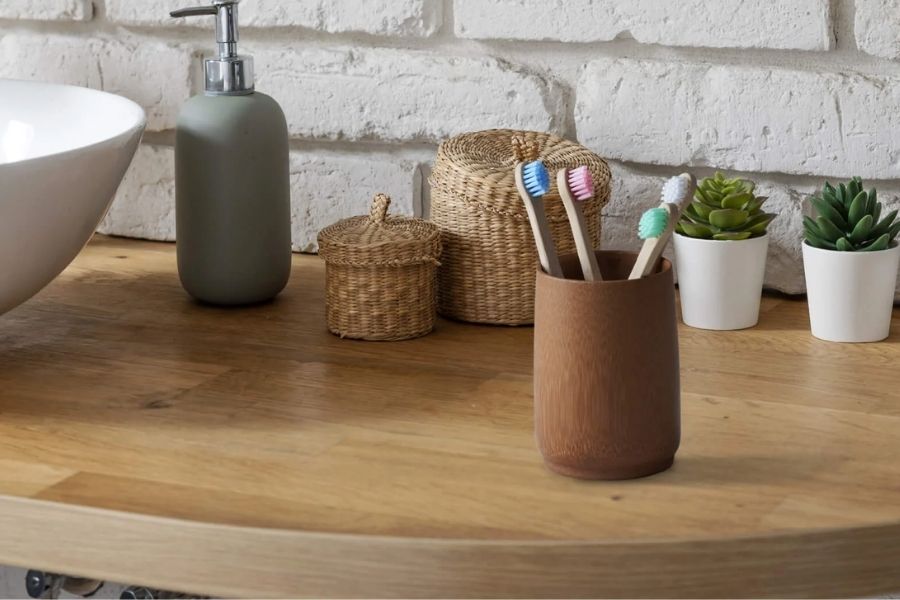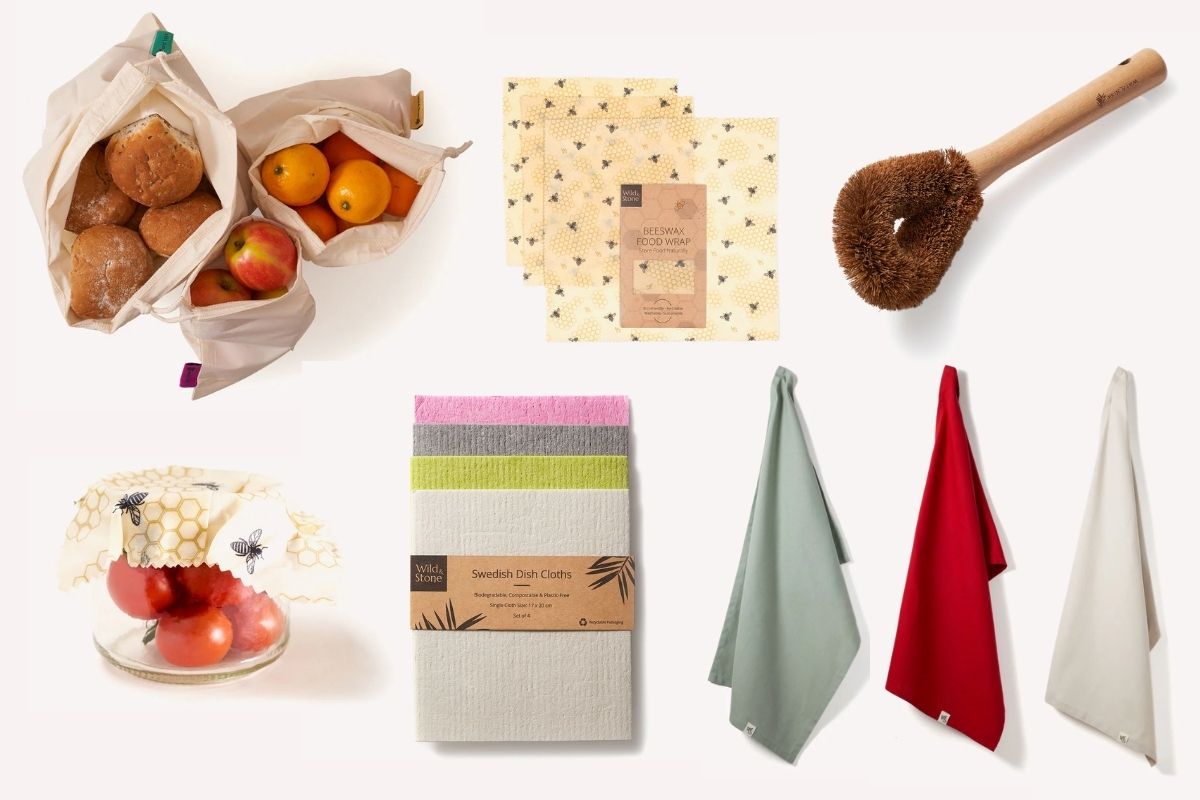Your Cart is Empty
INFO

How To Have A Plastic-Free Christmas
November 19, 2021 6 min read
As Christmas approaches, with all its stresses and joys - cards, gifts, decorations and crackers - those of us who are actively on our plastic-free journey can feel overwhelmed and dismayed.
We all know that Christmas is one of the worst offenders when it comes to piling up single-use plastic. From decorations to cards and even the food we put on our festive table, the choices we make over this period could have a major impact on our world for years to come.
But this year, we are here to help you step into Christmas without adding to the tonnes of plastic waste that puts such a strain on our environment, wildlife or the future of our oceans.
Read on to read our tips on everything from Advent calendars to Christmas crackers, with our tips on how to have a plastic-free Christmas.
Plastic Free Christmas Cards
Christmas cards are made of paper and can easily be recycled, right? Not always is the answer to that, and that's ignoring the fact that they usually come wrapped in plastic. The most commonly used material for wrapping greetings cards is polypropylene, as it's cheap to buy, which is the least environmentally friendly option.
If your Christmas cards are covered in glitter, that causes problems too, as it's usually a type of microplastic that ends up everywhere from Arctic ice to the stomachs of fish and birds.
So, what are the alternatives? An eCard sent online might be an answer for some - after all, there's no plastic or waste in that exchange - but that doesn't always feel personal enough.
Making your own cards is a great idea. You don't have to be a great artist to do it. For example, you could cut out images from last year's cards and stick them onto a new card, like a collage, or make a simple stamp and use water-based paints. Take a look online; there are hundreds of ideas, from the simple to the very arty, to help you make cards for your friends and relatives.
We also love these Seed Paper Christmas Cards from Peace With The Wild. Made in the UK from 100% recycled paper; these cards are embedded with seeds and, after the card has been used, it can be planted whole and, with a bit of care and attention, will grow into beautiful wildflowers or herbs. The cards are packaged in biodegradable vegetable starch, which is completely compostable. We love their cute penguin design.
Advent Calendars
Christmas Advent calendars are very high up there on the single-use plastic scale. Often a plastic tray, filled with foil-wrapped sweets, finished off with plastic wrap, they are a bit of a nightmare for those of us avoiding plastic.
But we don't have to sacrifice having an Advent calendar in order to ditch the plastic. This is another part of Christmas you can enjoy creating yourself. This is an area where the internet excels, and you can find lots of helpful and inspiring ideas and suggestions. We particularly like this idea of making an Advent calendar from items you'd typically throw in the recycle bin - old magazines and brown paper bags.
If you're not feeling incredibly crafty this year, you can still get your hands on a delicious, chocolate-filled advent calendar from Love Cocoa. All the chocolate is sustainably sourced and made without palm oil, plus the calendar itself is entirely plastic-free and recyclable. Not only that, but by buying it, you'll be supporting their plant a tree campaign.
Christmas Crackers
Christmas crackers come with an excessive amount of plastic packaging that's not always recyclable, often coated in that microplastic glitter and are usually filled with single-use plastic toys or other gadgets - traditionally condemned to the bin and landfill by boxing day. On average, 40 million crackers are thrown away globally each year; that’s 1,220 Mount Everest stacked on top of each other, a truly shocking amount.
We discovered Happy Crackers, which make beautiful and elegant fabric crackers that can be reused year after year. They are made with leftover fabric from Liberty, intended to become keepsake heirlooms. These luxury crackers are a sophisticated addition to any festive table, made to be unwrapped like a gift.
This year, the RSPB are stepping up and offering eco-friendly crackers too. Every element of them has been developed to minimise any impact on the environment, including no ribbons, which makes the whole cracker completely recyclable. Plus, they come on a recycled cardboard box with no plastic window. Perfect if you prefer a more traditional cracker.
Plastic Free Christmas Decorations
Retailers are slowly beginning to realise that we want to have a less plastic Christmas, and you can find some lovely wooden or fabric decorations for your tree in shops and online.
But the good news is that you don't have to throw away all your existing decorations just because they are made from plastic. As with most items, the most eco-friendly decorations are the ones you already own and reusing what we have is one of the main goals of a zero-waste lifestyle. So if you already have a loft stuffed with boxes of tinsel and plastic baubles aplenty, go ahead and enjoy them guilt-free.
But, if you're feeling inspired to create something new, it's not hard to make your own eco-friendly and plastic-free decorations. Making garlands from popcorn is easy and pretty, as is threading pinecones you picked up while out walking. Just making paper chains from old wrapping paper can be very effective. Try some origami techniques to make stars or angels or, if you can knit or crochet, you can use odd bits of wool leftover from other projects to make stars or baubles.
Making edible decorations is fun too - home-baked cookies or gingerbread cut into 'christmassy' shapes like snowmen or trees can be hung with string.
Another way to fill your house with the Christmas spirit is to use traditional holly, mistletoe or pine branches. You can collect these out and about yourself; remember to ask who owns the land or buy them from your local greengrocers.
When you’re decorating your home for Christmas, don’t forget to check out our suggestions for eco stocking gift ideas.
Ethical Christmas Trees
One of the big debates at Christmas is what to do about the Christmas tree. Which is better: a plastic tree you keep and reuse for many years? Or a real one, bought from a farm, that you have to reinvest in time and time again?
First of all, if you have a plastic tree that's in good condition or a cherished family item, don't throw it away. Remember the first rule of zero waste is to use what you have.
But if you need a new Christmas tree this year, the answer to the debate is pretty clear. Real trees win the sustainability battle.
Fake trees are made from non-renewable plastics and petroleum based products. Making these trees uses a lot of energy in the manufacturing and production process and, once they're used, they are not biodegradable and end up in landfills. As a perspective, a 6.5ft artificial tree has a carbon footprint of about 40kg of greenhouse gas emissions. That's more than twice the amount of a natural tree that might end up in the landfill.
Real Christmas trees are a sustainable resource. Usually grown on land that is difficult to use for anything else, they are a slow growing crop. It takes around seven years to grow a two-metre Christmas tree, and during that time, it’s acting as a carbon sink, trapping CO2 and ending up using ten times fewer resources than artificial tree factories. Christmas tree farms also plant more seedlings than they cut down adult trees, so the carbon exchange continues. Added to this, if you buy from a local farm, you'll be cutting out transport mileage and emissions.
To make sure your real tree is sustainably grown, ensure the farm has symbols saying they are part of the British Christmas Tree Growers Association (BCTGA) or the Forest Stewardship Council (FSC). These are the marks of an eco Christmas tree. Trees approved by the FSC are the best as this means they were grown in well-managed forests, minimising the use of harmful pesticides.
Once Christmas is over, remember to dispose of your tree correctly. Don't burn it straight away, as green wood is not good in terms of particulate emissions. Check with your local council, who usually offer a kerbside recycling scheme, where they will collect your tree in early January. They then shred them into chippings, which are typically used in parks and playgrounds.
There are so many ways to cut down on plastic this Christmas. Check out our blog on eco wrapping and holding an eco-friendly party, plus our vegan gifts guides - plastic-free gifts for him, for her, and Secret Santa gift ideas - we have you covered.
What plastic-free choices are you making this festive season? We’d love to see your homemade decorations. Share with us at hello@wildandstone.com or tag us on Instagram #wildandstone.
Wild & Stone’s mission is to create stylish, easy to adopt and usable alternatives to common plastic products around the home. We source all our products sustainably, from raw material to final delivery. Shop our wide range today.
Also in Sustainable Living Blog

The 5 Benefits of Using a Bamboo Toothbrush
August 07, 2025 4 min read
Discover five benefits of using a bamboo toothbrush, from saving the planet and oral health to the fastest plant in the world.

The 5 Best Eco-Friendly Kitchen Products
July 30, 2025 4 min read
Discover the 5 best eco-friendly kitchen products to take care of yourself, your home & the environment.
Make your inbox a little more eco!
Sign up and save 10% on your first order of 2 items or more.
Keep an eye on your inbox for the latest eco trends, articles, deals and product releases.



